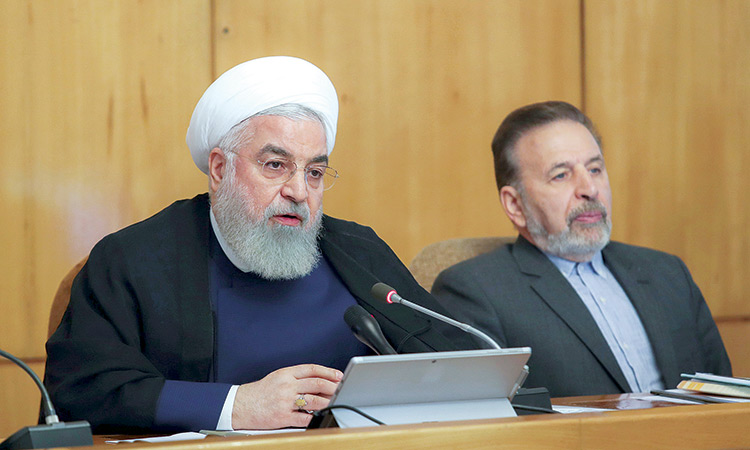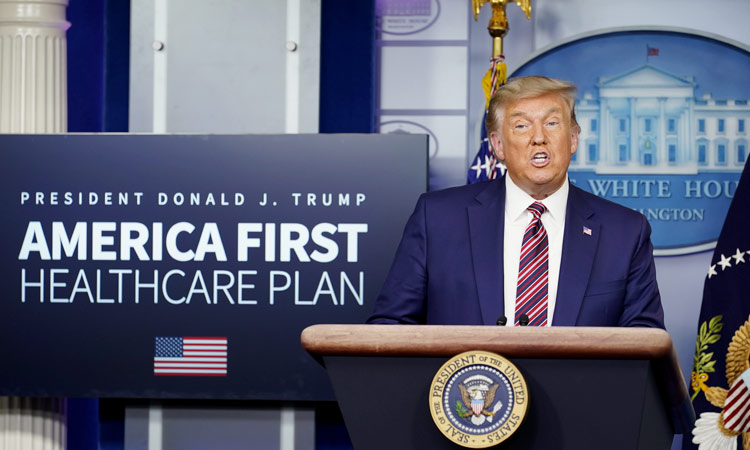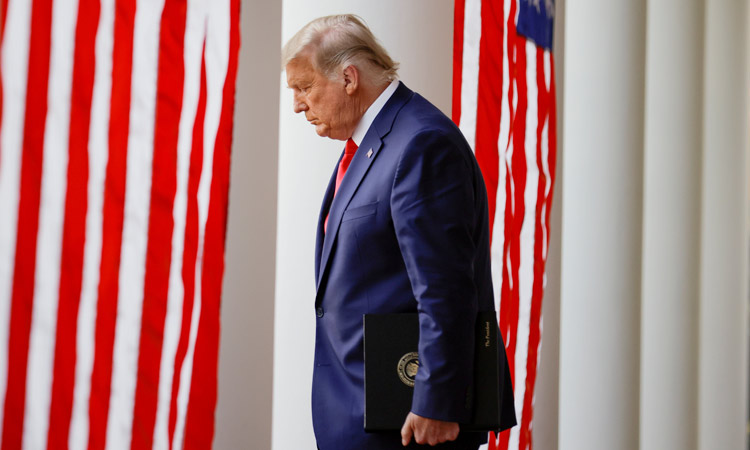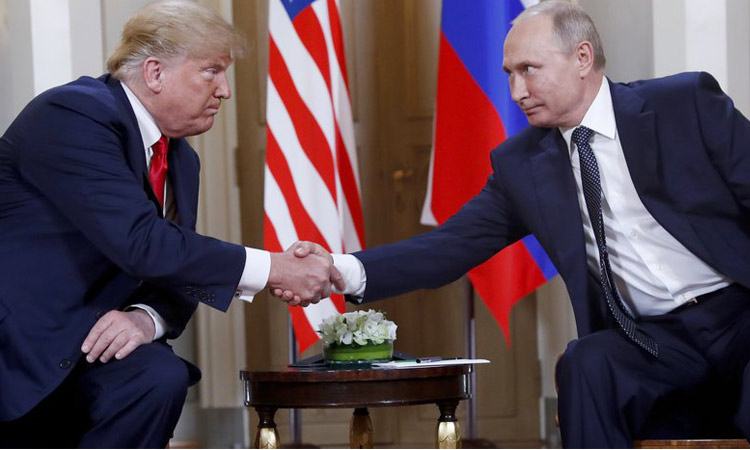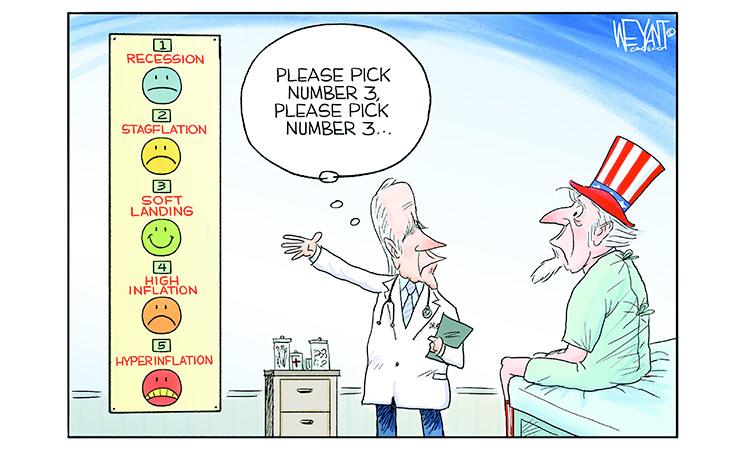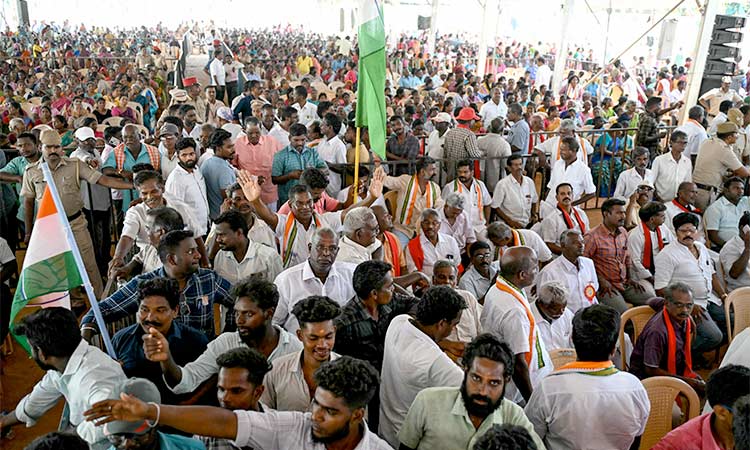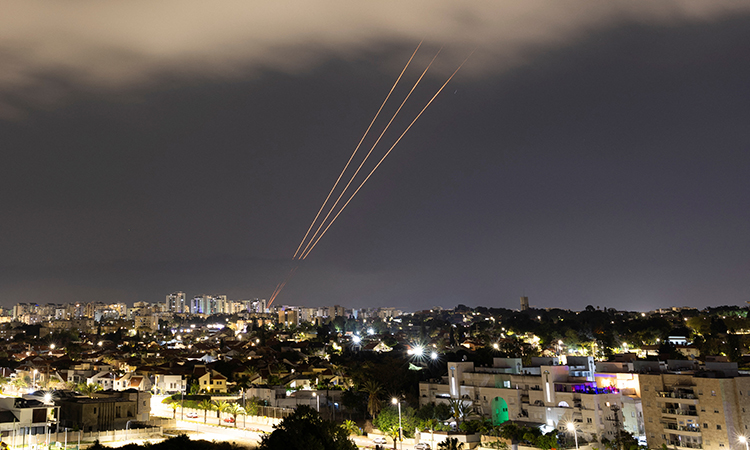Trump’s action on Soleimani personal in nature

Michael Jansen
The author, a well-respected observer of Middle East affairs, has three books on the Arab-Israeli conflict.
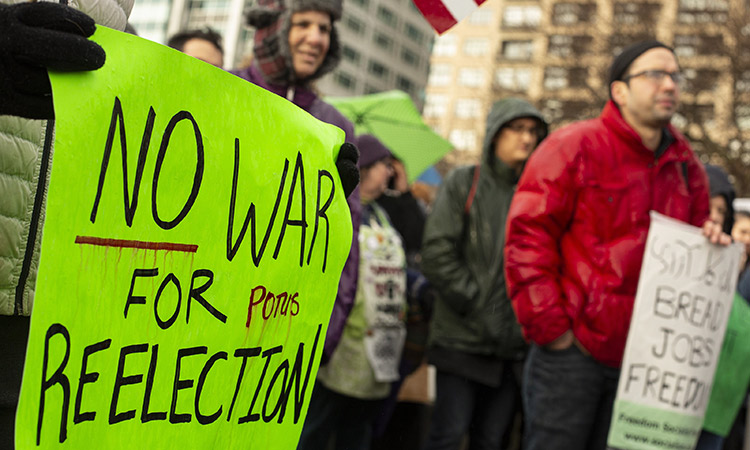
Anti-war demonstrators rally in Seattle, Washington. File/ AFP
Soleimani’s assassination was all about Trump. He is determined to demonstrate he is a great military leader committed to the defence of the US ahead of the 2020 presidential election. It is unlikely that his “base” of 35-40 per cent of voters will desert him, he needs to win over those who doubt his powers in key states in order to secure the votes in the Electoral College he needs to return to office. First and foremost, the assassination was a campaign gambit.
Trump is not alone in using warfare in his election campaign. He has followed the examples of his Republican predecessors. George HW Bush who went to war in Iraq in 1991 to prove to voters he was not a “wimp.” He won the war but lost re-election.
His son, George W. Bush waged war on Iraq to show his dad he was a “man” in 2003. He won the war, destroyed Iraq, and plunged the region into endless war.
Trump’s timing was significant. The deadly drone strike on Soleimani’s convoy driving near Baghdad’s international airport took place on the morning before Congress returned after the Christmas and New Year holidays to debate when and under what conditions to open Trump’s impeachment trial. His attack on Soleimani has, for now, focused attention on the killing, how Iran might respond, and risks to the region of escalating the US-Iran confrontation.
Trump boasted that he dared to eliminate Soleimani, besting both Bush and Obama. Trump claims that he has shown himself to be a savvy military leader. Trump felt challenged by both Iranian President Hassan Rouhani and Soleimani. After Trump violated the 2015 agreement for limiting Iran’s nuclear programme in exchange for lifting sanctions and imposed sanctions, Rouhani warned that the US “should know that peace with Iran is the mother of all peace, and war with Iran is the mother of all wars.” Trump tweeted, “NEVER, EVER THREATEN THE UNITED STATES AGAIN OR YOU WILL SUFFER CONSEQUENCES THE LIKES OF WHICH FEW THROUGHOUT HISTORY HAVE EVER SUFFERED BEFORE.”
Soleimani responded on behalf of Rouhani: “If you begin the war, we will end the war. You know that this war will destroy all you possess.” He later shared on Instagram the image of the White House exploding taken from a poster advertising the film “Olympus Has Fallen.” They later exchanged Instagram insults until Soleimani’s account was suspended. If Instagram had been fair, it would have cancelled Trump’s account as well. But the exchanges definitely riled psychologically insecure and infantile Trump who accepts little criticism and retaliates for insults.
Trump went ahead with the Soleimani assassination because he could. He has assumed the role of a monarch who can do what he wants rather than a president who must face the restraining hands of Congress and the judiciary. As commander-in-chief of the armed forces, he faces no constraints from his entourage since the “adults in the room” have gone or the servile Republican party.
Blessed with a free hand, Trump did not consider whether the assassination of Soleimani would be legal or consult the appropriate Congressional committee before ordering the strike. However, he told senator Lindsey Graham, a golfing buddy who is not a committee member, about the operation during his visit on December 23rd and 24th. This means that Graham was informed days before the December 27th attack that killed a US contractor, on US forces at the Iraqi base near Kirkuk. The US retaliated for this on the 29th by mounting strikes on three bases in Iraq and Syria of the pro-Iranian Kitaeb Hizbollah, killing 25 fighters.
In retaliation, on December 31st January 1st Kitaeb Hizbollah and allied militiamen besieged the US embassy in Baghdad on December 31st and January 1st.
These violent events were used by Trump and his hawkish minions to justify the killing of Soleimani whom they also accused — without giving proof or specifics — of planning to kill scores, hundreds, or thousands of US servicemen and civilians. The Guardian quoted New York Times correspondent Rukmini Callimachi as tweeting that two informed sources said the case was “razor thin.”
Trump’s claims do not fit Soleimani modus operandi. He was a cautious warrior and sophisticated strategist who, unlike Trump, did not seek to provoke all out war, which he knew would devastate his country. Soleimani preferred carefully calculated anonymous tit-for-tat operations. He sought, in vain, to force Trump to ratchet down the punitive sanctions regime so that Iran could, once again, export its oil freely and enjoy normal commercial relations with the rest of the world. Soleimani used limited force to obtain politico-economic objectives when dealing with the US. Soleimani employed a scalpel while Trump prefers a sledgehammer.
When exiting the nuclear accord, Trump conveniently forgot that Iranian-founded and fostered Iraqi Shia paramilitaries, operating under Soleimani’s command, had collaborated with the US in the battle in Iraq against Daesh. While Trump sat in the safety of the Oval Office in the White House in Washington and US pilots flying high in the sky dropped bombs on Daesh positions and concentrations, Soleimani was on the ground leading his troops. Without the paramilitaries of the Hashd Al Shaabi, the Popular Mobilisation Forces (PMF), the war against Daesh in Iraq would not have been won. Since the Iraqi army could not tackle Daesh on its own, the PMF assumed the same role as the Kurdish-dominated Syrian Democratic Forces in the war against Daesh in Syria. In recognition of their service and sacrifice Trump abandoned the Syrian Kurds to the tender mercies of the Turkish army and killed Soleimani.
There is a key difference, however, between Syria and Iraq. The betrayed and beleagured Syrian Kurds continue to occupy vast swathes of Syrian territory and serve Trump in the battle against Daesh remnants. The Kurds remain loyal to Trump while under threat, but pro-Iranian militiamen recruited from the PMF, Hizbollah, and other countries have fought Daesh, Al Qaeda and associated extremist outfits in Syria and enabled the government to recapture territory lost to insurgents since 2011.
In Iraq, PMF fighters have, formally, been drafted into the regular army while PMF commanders have become leaders of political factions powerful in the Iraqi government and parliament. They are now demanding the withdrawal of the 5,200 US troops from Iraq and could press for the evacuation of the staff of the massive US embassy in Baghdad. Iraqis quite rightly fear that the US and Iran could turn their land into a battleground for the fourth time since the Iraq-Iran war began in 1980.
